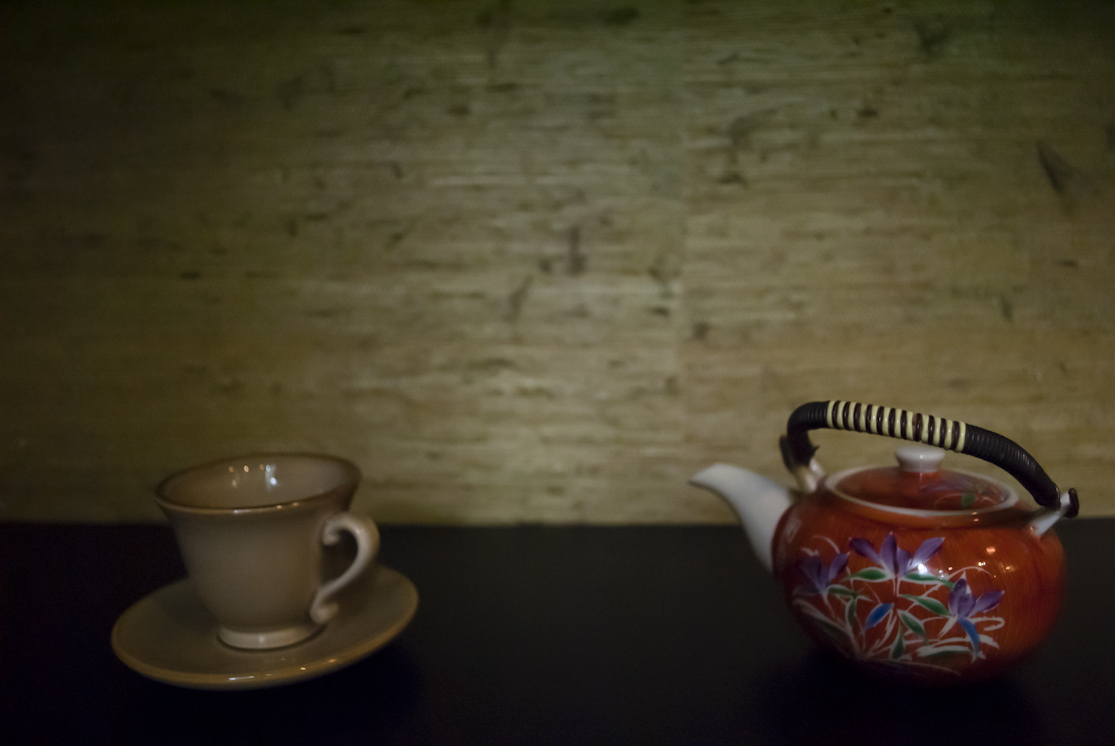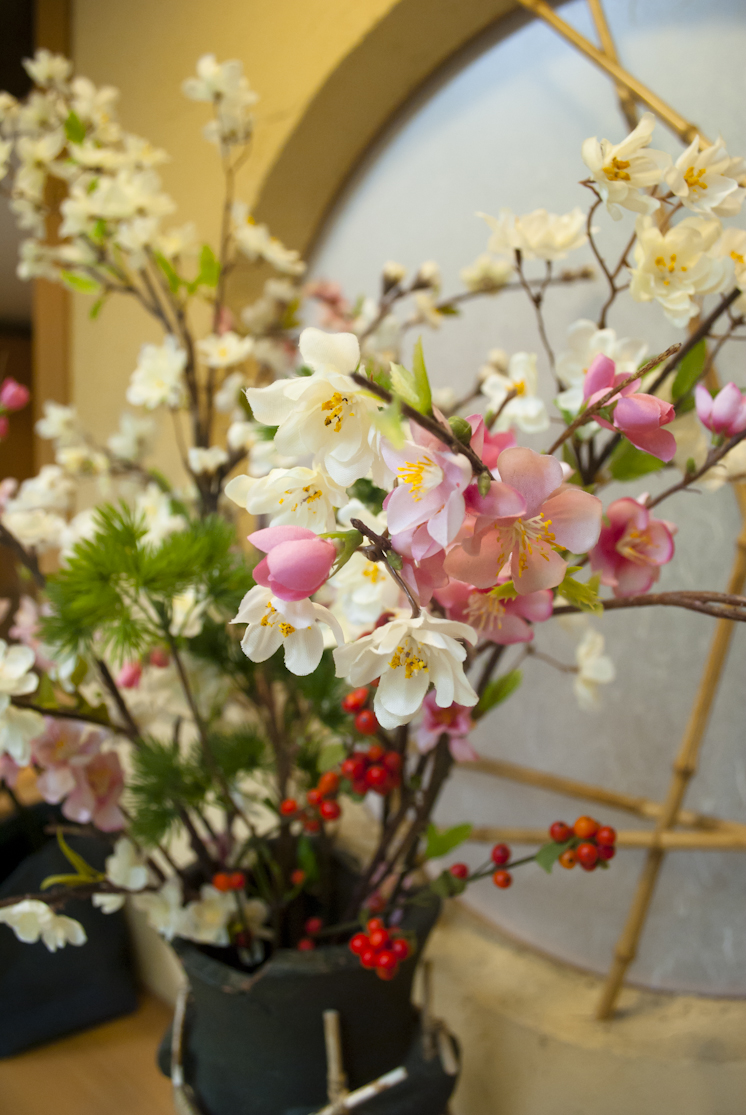
It is truly universal that for any place in the United States, to be cool and fancy is to be having a decent coffee shop. And café here is more about coffee; it’s also about mouth-watering dessert and hot tea.
I am now sitting in a café in the little Midwest town, a place, however, still called as Iowa City and thinking about how to start my story about tea rituals in different cultures worldwide. Within the whole morning I have spent here, I saw at least 10 people ordering tea, which were served with tea pots and tiny cups accompanied by saucers. I am wondering whether this can be viewed as a kind of tea ritual. Even though, the word "ritual" is more or less related with religion, history or ceremony, in my mind, rituals, on the basic level, is what people do in their daily life. So How interesting will my story be if I start talking about tea rituals, originally from my hometown—China, by saying something about the tea rituals in the United States.
Oh, wait! It seems more suitable to say the modern or contemporary tea rituals in the United States, since I just came here last August. Differing from Asian tea rituals, which emphasize more on the process of brewing tea, American tea rituals pay much attention to whether the place of drinking tea is funky and comfortable, whether the food complementing teas is delicious and fancy. People sit in a comfortable place with the combination of a teapot and a cup on the table. Beside the tea, cakes or cookies lie in a shining plate with the same cozy position as those people who ordered them. What are only required in such a comfortable "ritual" are chatting with friends, reading favorite books or enjoying the warm sunshine and let minds wondering anywhere they want.
I think it is more or less influenced by the well-known “afternoon tea” from the British. In British, except “afternoon tea”, Victorian-era “high tea” is also viewed as a tea ritual. Both of these two rituals should be seen to have the right equipment, manners, and social circle, which were just as important as the drink itself.
In British, tea is usually black tea served with milk and sometimes with sugar. In tea rituals, tea would be served with cups and saucers instead of mugs. A typical semi-formal British tea ritual might run as follows (the host performing all actions unless noted):
1. The kettle is briefly boiled and water poured into a tea pot.
2. Water is swirled around the pot to warm it and then poured out.
3. Loose tea leaves—nowadays often tea bags or the dust from a ripped-open tea bag—are then added to the pot.
4. Water is added to the pot and allowed to brew for several minutes while a tea cosy is placed on the pot to keep the tea warm. If the tea is allowed to brew for too long, id est more than 10 minutes, it will become "stewed", resulting in a very bitter, astringent taste.
5. Milk may be added to the tea cup, the host asking the guest if milk is wanted, although milk may alternatively be added after the tea is poured.
6. A tea strainer, like a miniature sieve, is placed over the top of the cup and the tea poured in.
7. The straight black tea is then given to guests and they are allowed to add milk and sugar to their taste.
8. The pot will normally hold enough tea so as not to be empty after filling the cups of all the guests. If this is the case, the tea cosy is replaced after everyone has been served.
The popularity of tea in the British can be dated back to the 18th century, when the British colonized many Asian countries. China, as the original place of tea became one of the most important countries for the British to import teas.
Differing from the British, Chinese tea culture refers to the methods of preparation of tea, the equipment used to make tea and the occasions in which tea is consumed. Even now, in both casual and formal Chinese occasions, tea is consumed regularly. In addition to being a drink, Chinese tea is used in traditional Chinese medicine and in Chinese cuisine.
There are several special circumstances in which tea is prepared and consumed.
- As a sign of respect.
- For a family gathering
- To apologize
- To express thanks to your elders on one’s wedding day
The ways of brewing or preparing Chinese tea are the most important part in Chinese tea rituals. For example, green teas are more delicate than oolong teas or black teas and should be brewed with cooler water as a result. The most informal method of brewing tea is the simple adding of leaves to a pot, and hot water. This method is commonly found in households and restaurants, as at Dim sum or Yum cha in Cantonese restaurants. Two other primary methods of brewing tea are the Chaou method and the Gongfucha method.
Brewing tea using a Gaiwan
- Boil water, or heat to specified temperature for tea
- Heat the teaware with boiling water
- Add leaves to line bottom of the cup
- Rinse tea leaves and drain
- Slip water along the side while pouring into the Chaou
- Fill to 2/3 full
- Wait for 30 seconds, Serve.
A Gongfu Tea(Cha) method
- Boil water.
- Rinse the teapot with hot water.
- Fill the teapot with tea leaves up to one third of the height of the pot.
- Rinse the tea leaves by filling the pot with hot water up to half full and draining the water immediately leaving only tea leaves behind. (This step, and all subsequent steps involving pouring water, should be performed in a large bowl to catch any overflow.)
- Pour more hot water into the teapot and pour water over the teapot in the large bowl. Bubbles should not be permitted to be formed in the teapot. The infusion should not be steeped for too long: 30 seconds is an appropriate maximum.
Taoism crucially influenced the development of Chinese tea rituals. The elements of the Chines tea rituals are the harmony of nature and enjoying tea in an informal and formal setting.
As a Chinese, before I came to the United States, I never drank coffee. Different teas were always well-packed in my home, including green tea, oolong tea, red tea, Pu’er tea and flower tea. Mostly, friends or families to my home will be expected to sit down and drink tea while talking( only tea, no food). The Chinese consider tea drinking as the most decent way to treat visitors.

Japan is also an important country, highly valuing tea culture. Tea was brought to Japan in the 9th century, by the Buddist Monk Eich?, who had returned to Japan from China. After that, Japanese developed their own tea ritual, involving the ceremonial preparation and presentation of matcha, powered green tea.
Murata Juk? is known in chanoyu history as the early developer of the Japanese tea ritual as spiritual practice, and therefore is generally counted as the founder of the Japanese "way of tea". By the 16th century, tea drinking had spread to all levels of society in Japan. Sen no Rikyu, perhaps the most well-known figure in Japanese tea ritual, The principles he set for the tea ritual are harmony, respect, purity, and tranquility.
The most important part of the Japanese tea ritual is preparing matcha.There are two main ways of preparing matcha for tea ritual: thick (koicha) and thin (usucha).
As the terms imply, koicha is a thick blend of matcha and hot water that requires about three times as much tea to the equivalent amount of water than usucha. To prepare usucha, matcha and hot water are whipped using the tea whisk (chasen), while koicha is kneaded with the whisk to smoothly blend the large amount of powdered tea with the water.
Thin tea is served to each guest in an individual bowl, while one bowl of thick tea is shared among several guests.
The tea equipment in the Japanese tea ritual is also important. Usually, the following are a few of the essential components,
- Chakin,a small rectangular white linen or hemp cloth mainly used to wipe the tea bowl.
- Tea bowl.
- Tea caddy,the small lidded container in which the powdered tea is placed for use in the tea-making procedure.
- Tea scoop, being used to scoop tea from the tea caddy into the tea bowl.
- Tea whisk, being used to mix the powered tea with the hot water.
As tea becoming the wide-spread drinking, tea rituals can be found worldwide, although still are centered on Asia and Europe. Tea rituals vary among different countries. However, at the basic level, tea rituals are a way of making a hot drink, enjoying the process of preparing it and turning those tiny leaves into best taste.
Now it is 3:00 p.m. my tea and coffee cake has been served in front of me. Let’s start my American tea ritual in this home-style café with warm sunshine cascading down on my table through the window.



Leave a Reply Cancel Reply